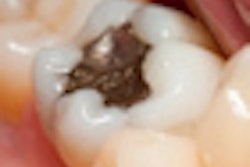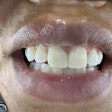A common test used to determine mercury exposure from dental amalgam restorations may significantly overestimate the amount of the toxic metal released from these fillings, according to University of Michigan researchers (Environmental Science & Technology, March 20, 2013).
Scientists agree that dental amalgam fillings slowly release mercury vapor into the mouth. But both the amount of mercury released and the question of whether this exposure presents a significant health risk remain controversial, the study authors noted.
Public health studies often make the assumption that mercury in urine (which is composed mostly of inorganic mercury) can be used to estimate exposure to mercury vapor from amalgam fillings. These same studies often use mercury in hair (which is composed mostly of organic mercury) to estimate exposure to organic mercury from a person's diet.
But the University of Michigan study, which measured mercury isotopes in the hair and urine from 12 Michigan dentists, found that their urine contained a mix of mercury from two sources: the consumption of fish containing organic mercury and inorganic mercury vapor from the dentists' own amalgam fillings.
"These data suggest that in populations that eat fish but lack occupational exposure to mercury vapor, mercury concentrations in urine may overestimate exposure to mercury vapor from dental amalgams," said Joel D. Blum, PhD, a co-author of the paper and a professor in the department of earth and environmental sciences, in a university news release.
The study demonstrated that mercury isotopes can be used to more accurately assess human exposure to the metal -- and the related health risks -- than traditional measurements of mercury concentrations in hair and urine samples. Specifically, isotopes provide a novel chemical tracer that can be used to "fingerprint" both organic mercury from fish and inorganic mercury vapor from dental amalgams.
The researchers relied on a type of isotopic fractionation called mass-independent fractionation to obtain the chemical fingerprints that enabled them to distinguish between exposure to methylmercury from fish and mercury vapor from dental amalgam fillings.



















